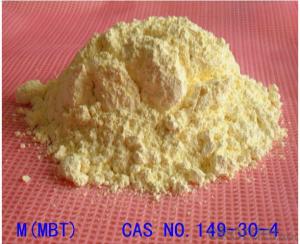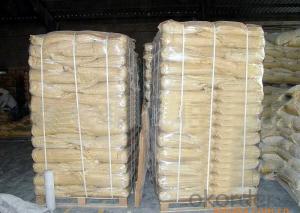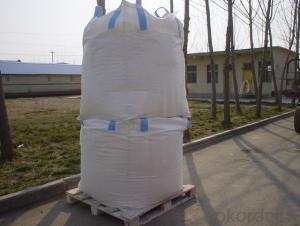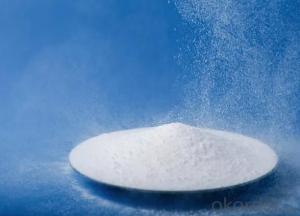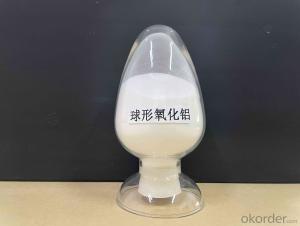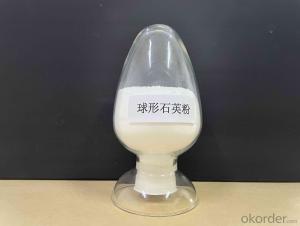Rubber Chemcials Rubber Antioxidant 6PPD 4020
- Loading Port:
- Tianjin
- Payment Terms:
- TT OR LC
- Min Order Qty:
- 25 m.t.
- Supply Capability:
- 12000 m.t./month
OKorder Service Pledge
OKorder Financial Service
You Might Also Like
6PPD 4020
Chemical Name:N-(1,3-dimethylbutyl)-N'-phenyl-p-phenylenediamine
Molecular Formula:C18H24N2
Molecular Weight:268.40
CAS NO.:793-24-8
Executive standard:HG/T 3644-1999
Specification:
| Index |
| |
Appearance |
|
Soften Point,℃ ≥ | 45.0 |
Loss on drying,% ≤ | 0.50 |
Ash,% ≤ | 0.15 |
Assay(GC)% ≥ | 96.0 |
Solidifying Point,℃≥ | 45.5 |
Properties: Dark brown to dark violet pastilles relative density of 0.986-1.00. Soluble benzene, acetone, ethyl acetate, toluene dichloromethane and slightly soluble in ether, do not dissolve in water. Provides powerful and antioxidant properties with excellent high temperature and flex resistance to rubber compounds.
Applications:Include the use in pneumatic,solidtires,beles,hoses,cables,bushings,automotive mounts and general mechanical products that are exposed to continuous and intermittent dynamic operating conditionsand and require protection from coronations.
Packing:Packed in 20kg per bags.
Properties: The product should be stored in the dry and cooling place with good ventilation. The product should be avoid hot sunshine.
- Q:In chemistry what is a catalyst and an example?
- Catalysts are substances that increase the rate of a reaction by providing a low energy shortcut from reactants to products. In some cases, reactions occur so slowly that without a catalyst, they are of little value. Nearly all reactions that occur in living cells require catalysts called enzymes- without them, life would be impossible. There are two important classes of catalysts: homogenous catalysts like enzymes and aqueous ions that are uniformly mixed with the reactants, and heterogeneous catalysts that provide a surface that holds and reconfigures the reactants in a way that is favorable for reaction. Examples of homogeneous catalysis. Catalysts in solution with the reactants usually provide fast reaction paths by allowing reactants to form an unstable intermediate that quickly decomposes into products. For example, the substitution reaction CH3CH2OH(g) + HCl(g) H2SO4 ----->CH3CH2Cl + H2O(ell) is catalyzed by acid because the ethanol is converted into unstable CH3CH2OH2+, which quickly reacts with Cl- to produce the products. Definition: A catalyst is a subtance that increases the rate of a chemical reaction by reducing the activation energy, but which is left unchanged by the reaction. Examples: A piece of platinum foil is a catalyst for the combustion of methane in air.
- Q:Especially how can i explain the experiment with a paper and 2 paperclips with the paper acting as the catalyst.
- A catalyst acts on one material to activate it towards reaction with another material that it would not otherwise spontaneously react with (it lowers the reaction's activation barrier). For instance, the 2 paperclips may not want to react with each other, but if the paper attaches to one, it becomes more reactive and it will now clip onto the other paperclip. The catalyst then leaves (paper is detached) which is called catalyst regeneration, which goes on to activate another molecule in the same fashion. A common example is using Lewis acid catalysts to activate carbonyls by coordinating to the oxygen so that the the carbon becomes more electrophilic for attack by some nucleophile.
- Q:Please help me
- A catalyst is a substance which is used to increase or decrease the rate of a reaction, without itself undergoing any chemical change. There are two types of catalysts, positive and negative. Positive catalysts are used to increase the rate of a reaction while negative catalysts are used to decreasing the rate of a reaction. Enzymes are proteins which act as catalysts in biochemical reactions. They operate between a certain pH level and temperature. If there is a change in pH level or temperature, their efficiency decreases.
- Q:What is the difference between biological enzymes and chemical catalysts?
- Biological enzyme is a protein, according to the mild reaction conditions, high specificity, the advantages of strong catalytic capacity,
- Q:Which branch of chemistry or what specialty can study the catalyst
- Physical chemistry: catalyst surface structure, catalytic mechanism and catalytic reaction process
- Q:What is the difference between an enzyme catalyst in a living body and a catalyst in chemistry?
- enzyme susceptibility inactivation Chemical catalyst under certain conditions, due to poisoning and loss of catalytic capacity; and enzyme than the chemical catalyst is more fragile, more volatile activity. Any factor that makes the protein degenerate (to strengthen the acid, alkali, high temperature, etc.), can make the enzyme completely lost activity.
- Q:What are the methods of catalyst characterization?
- Physical means, is commonly used detection means, infrared, ultraviolet, electron microscopy, X-ray diffraction, nuclear magnetic, etc., of course, including a variety of conventional inability analysis.
- Q:and can you give me an example of it .. please give it in easy terms if you can. thanks
- Catalyst means an agent that provokes or speeds significant change or action Hope this helps.
- Q:Why extract the genome, the digestion is always not cut
- The enzyme, like the general catalyst, only catalyzes the thermodynamics of the permissible chemical reaction, shortening the time to reach the chemical equilibrium without changing the equilibrium point. The enzyme as a catalyst has no qualitative and quantitative changes before and after the chemical reaction. The mechanism of action of enzymes and general catalysts is to reduce the activation energy of the reaction.
- Q:Briefly define a homogenous catalyst? Help please!?
- A homogenous catalyst is in the same phase as the rxn it is catalyzing. Most people think of catalysts as heterogenous: either sold (cat) liquid (rxn) (Raney Ni hydrogenation) or solid (cat) gas phase rxn) (catalytic convertors, NH3 production, SO2 oxidation, nitric acid production) polyethylene synthesis with Ziegler Natta catalysts. (Wikipedia). However starting probably with the Wilkinson hydrogenation catalyst Rh(PPh3)3Cl in 1966 a whole field of homogeneous catalysis has develope where the catayst is in soln. It proved to be a Renaissance for Inorg chem. These catalysts have several advantages over heterogenous catalysts: take place under mild conditions (green chem); the mechanisms are usually understood and can therefore be modified to be extremely specific for a substrate. There have been several Nobel Prizes in this area in the last decade because of their importance in organic synthesis: 2010, 2005, 2001. The one type of homolytic gas phase catalysis rxn I can think of are those that involve a radical chain mechanism: destruction of O3 by Cl? and chlorination (bromination) of alkanes.
1. Manufacturer Overview |
|
|---|---|
| Location | |
| Year Established | |
| Annual Output Value | |
| Main Markets | |
| Company Certifications | |
2. Manufacturer Certificates |
|
|---|---|
| a) Certification Name | |
| Range | |
| Reference | |
| Validity Period | |
3. Manufacturer Capability |
|
|---|---|
| a)Trade Capacity | |
| Nearest Port | |
| Export Percentage | |
| No.of Employees in Trade Department | |
| Language Spoken: | |
| b)Factory Information | |
| Factory Size: | |
| No. of Production Lines | |
| Contract Manufacturing | |
| Product Price Range | |
Send your message to us
Rubber Chemcials Rubber Antioxidant 6PPD 4020
- Loading Port:
- Tianjin
- Payment Terms:
- TT OR LC
- Min Order Qty:
- 25 m.t.
- Supply Capability:
- 12000 m.t./month
OKorder Service Pledge
OKorder Financial Service
Similar products
New products
Hot products
Related keywords
